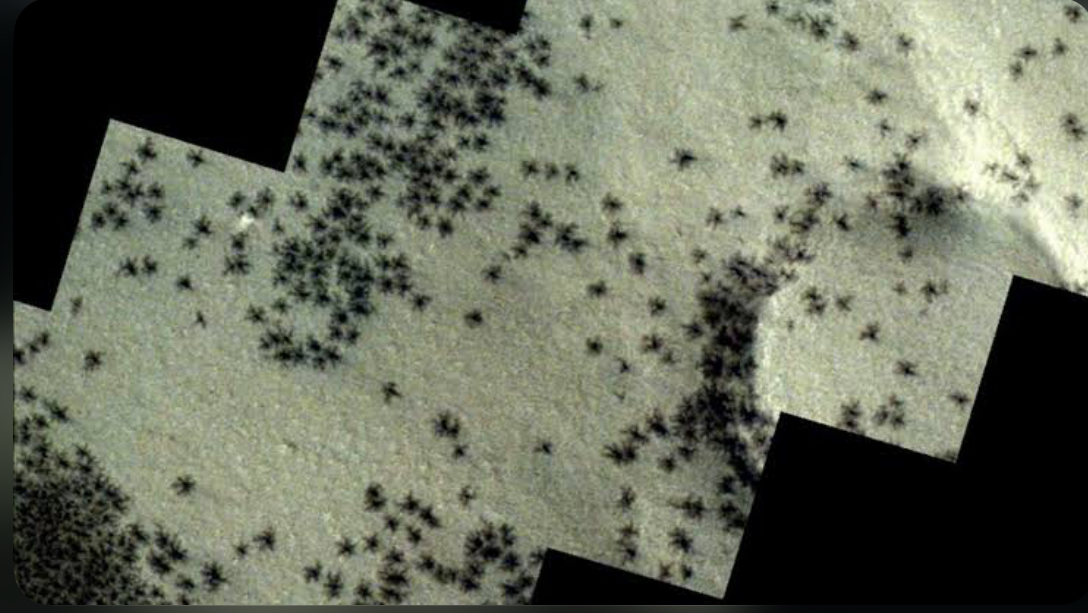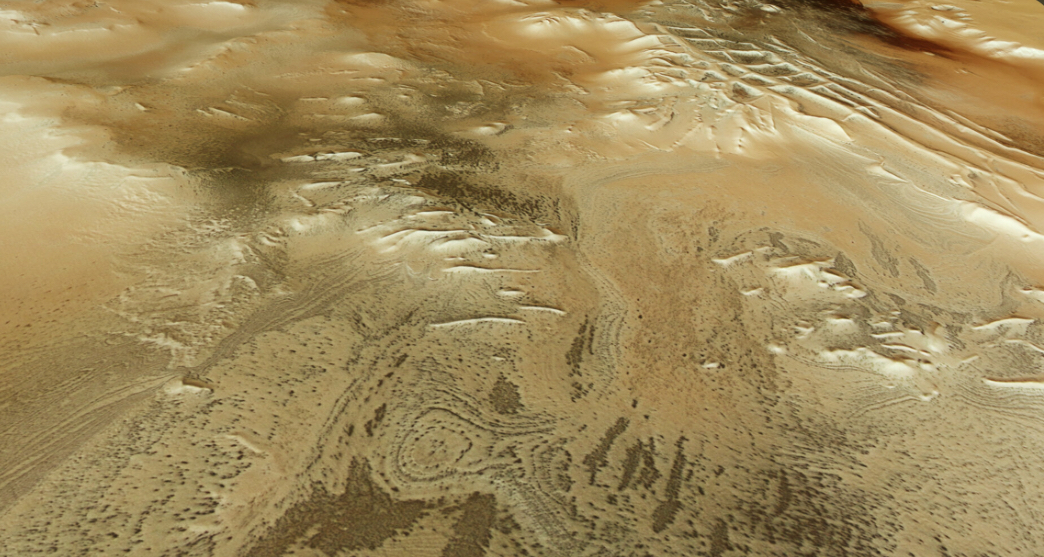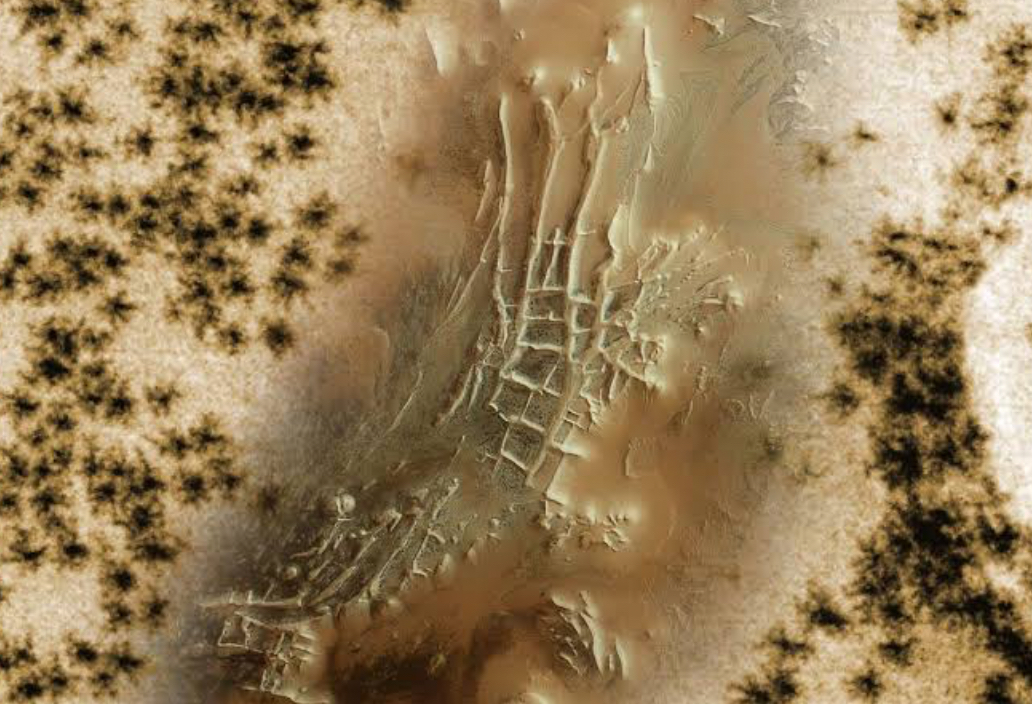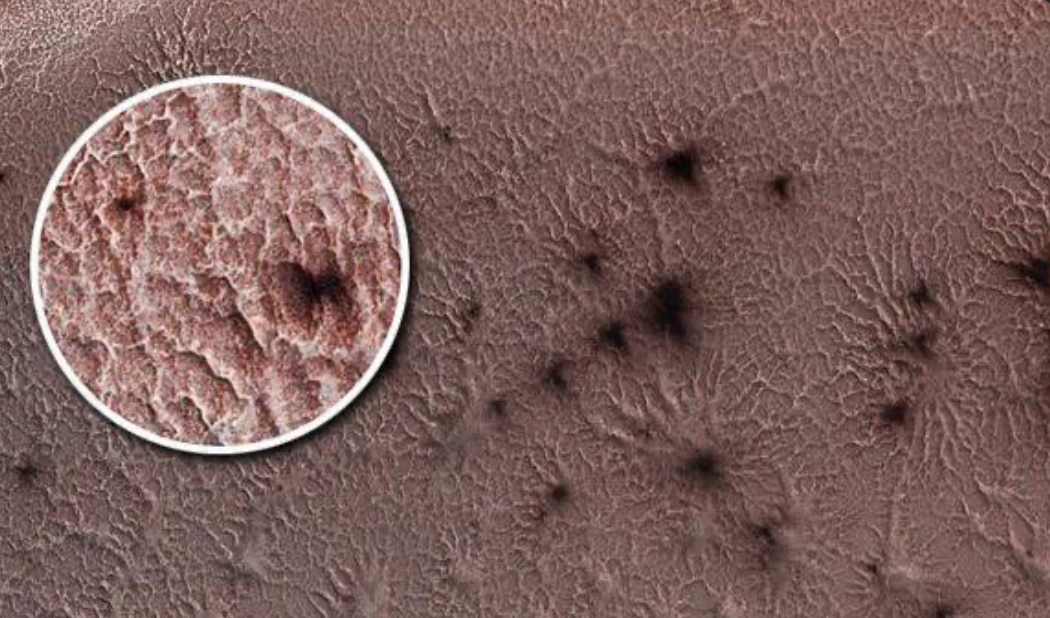The European Space Agency (ESA) recently gave us a look at an interesting Martian occurrence that keeps giving us new information about the Red Planet. Images from the ESA's Mars Express orbiter showed interesting designs on the surface that looked like spider webs. This made a lot of people curious online. But let's not get too excited about the idea of spiders living on Mars just yet. Let's look into the science behind this fascinating find.

Spring on Mars: A Time for Making Curious Things
The real reason for the "spider" patterns is that the sun and Mars' polar ice caps move around each season. Mars' climate has a long, cold winter, and carbon dioxide in the air freezes onto the polar ice sheets. As spring arrives, sunlight bathes the landscape, causing an amazing change.
Using sublimation: The carbon dioxide ice at the bottom of these winter layers sublimates, which means it goes from being solid to gas right away.
Getting more pressure: The layers of ice on top of this newly formed gas trap it, building pressure and searching for a way out.
Explosive Shocks: As pressure increases, the gas finally breaks through the ice. It comes out in tall fountains or geysers that can break through layers of ice up to a metre thick.
Aftermath in dust: The noise and mess from these explosions are bad. As it leaves, the gas carries the dark-colored dust from Mars. As the dust settles, it leaves behind dark spots on the surface that are 45 metres to a whopping 1 kilometre across.
What Spiders Look Like:The most interesting part of this process is not what you see at first. As the pressurised gas leaks out, it cuts intricate, squiggly lines in the leftover ice. The gas flow carved these pathways, giving the pictures their well-known "spider" patterns.
Because of the way sunlight, temperature, and the planet's thin atmosphere interact, the surface of Mars is always changing. The dark spots and spider-web patterns etched into the ice demonstrate this.

Opening the doors to ESA's Martian Fleet
The European Space Agency plays a big part in figuring out what's going on on Mars. Two of the most important tools that ESA uses to explore Mars deserve special mention:
Express to Mars: Since its launch in 2003, Mars Express has been a reliable rover that has studied the Red Planet nonstop for more than twenty years. The High Resolution Stereo Camera (HRSC) on board has collected a wealth of information about Mars's surface traits, minerals, atmosphere, and even its structure below the surface. The HRSC has provided us with a lot of useful information about Mars' surface, from ridges shaped by the wind to old riverbeds.

The TGO is also known as the ExoMars Trace Gas Orbiter: Launched in 2016, TGO searches the atmosphere of Mars for tiny gases like methane, potentially indicating signs of possible life. TGO's main job is to study the atmosphere, but its high-resolution camera has also taken beautiful pictures of the surface of Mars, including the latest patterns that look like spider webs.
Together, these satellites have helped us learn a lot more about Mars, making ESA an important part of Mars exploration.
The Mistaken Identity Case: Mysteries in Inca City and Mars
New pictures taken by Mars Express also show a place on Mars's southern polar ice cap that is known as "Inca City." NASA's Mariner 9 probe discovered Inca City in 1972. Its name derives from the way its ridges resemble Earth's Inca structures. However, how Inca City came to be is still a mystery.

Changes in Sandstone: The visible ridges may have formed over time as wind-blown sand dunes adhered to rock formations.
Intrusions by Magna: Magma, or molten rock, may have pushed through cracks in Mars' crust and hardened into the straight structures we see today.
Impact of Glaciers: Scientists think that the hills might be eskers, which are winding features left behind by glaciers that used to flow across the surface of Mars.
Solving the real history of Inca City on Mars remains a fascinating puzzle. The interesting "spider" patterns appear primarily on Inca City's edges. This suggests that these seasonal gas eruptions happen all over the Martian polar ice caps.

Conclusion: A Wonderful World Shown
The mysterious "spider" on Mars serves as an intriguing reminder of the ongoing research. These results show how creative the ESA's projects are and how much the environment on Mars is changing. We can see some really cool things on Mars thanks to pictures sent back by the ESA's Mars Express. Even though these traits don't prove that other worlds have life, they do show that Mars is always changing. The ESA's work on projects like Mars Express and ExoMars helps us learn more about Mars and opens the door for more work in the future. When we take trips to Mars, we learn more about the world and our place in the universe as a whole.
Image Source: Multiple Agencies
Inputs from Agencies
© Copyright 2024. All Rights Reserved Powered by Vygr Media.























